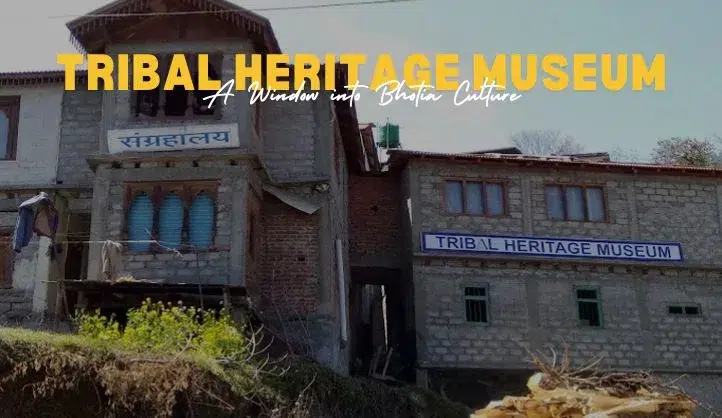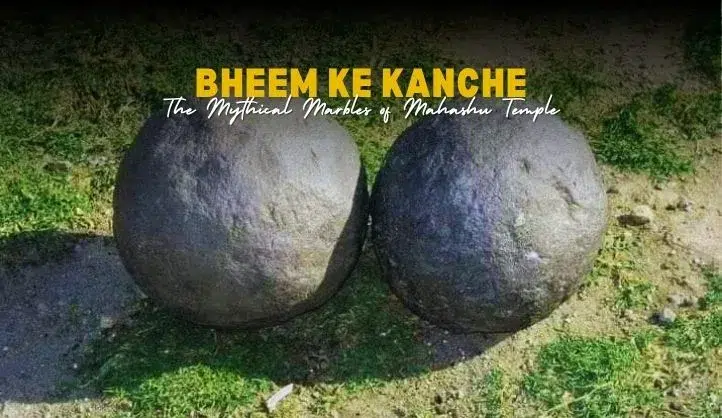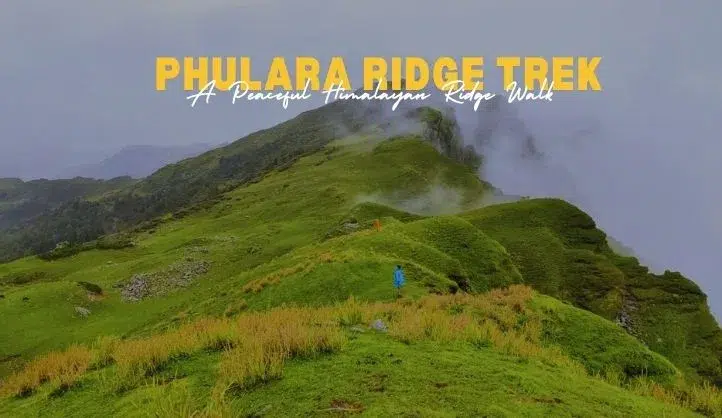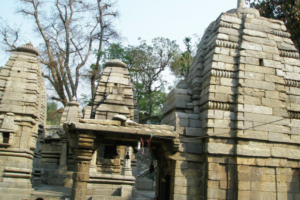“Master Deoria Tal trekking with expert tips! 🏞️ Your ultimate guide to a memorable adventure. Get ready to conquer the heights! 🚶♂️ DeoriaTal Trek”
Deoria Tal Trekking Tips:
Deoria Tal, a captivating lake nestled in the Garhwal Himalayas, offers an enchanting trekking experience. Here are valuable tips to make your trek memorable:
1. Physical Preparation:
Condition your body with cardio and strength training exercises. Regular walks and hikes will boost your stamina and endurance.
2. Packing Essentials:
Carry lightweight clothing, sturdy trekking shoes, a waterproof backpack, and a first aid kit. Don’t forget sunblock, sunglasses, and a hat for sun protection.
3. Acclimatization:
Arrive a day early to adapt to the altitude. Stay hydrated, avoid alcohol, and listen to your body. Mild headaches and nausea are common but should not be ignored.
4. Local Guides and Maps:
Hire a local guide for insights into the region’s culture and environment. Obtain detailed maps to stay on the right trail and prevent getting lost.
5. Camping Tips:
Set up your campsite away from the lake to ensure environmental conservation. Follow the principles of Leave No Trace and keep the area clean.
6. Weather Awareness:
Check weather forecasts before embarking. Dress in layers to accommodate temperature fluctuations. Be prepared for rain and carry a waterproof cover for your backpack.
7. Photography:
Capture the breathtaking landscapes, but also take time to immerse yourself in the scenery. Respect local customs and ask for permission before photographing people.
8. Respect Nature and Culture:
Respect the local communities, their traditions, and the environment. Avoid littering and damaging plants or wildlife.
9. Safety Measures:
Stay with your group and inform someone about your trekking plans. Carry emergency numbers and a fully charged mobile phone. Familiarize yourself with basic first aid.
10. Leave No Trace:
Preserve the natural beauty of Deoria Tal by taking all your waste with you. Minimize your impact on the ecosystem to ensure its preservation for future generations.
History of Deoria Tal Trekking:
1. Ancient Significance:
Deoria Tal holds historical importance in Hindu mythology. It is believed to be the spot where Yaksha questioned the Pandavas during their exile.
2. Recent Trekking History:
In recent decades, Deoria Tal has gained popularity among trekkers and nature enthusiasts. Its serene beauty and accessible trail have attracted adventure seekers from around the world.
3. Ecotourism and Conservation:
Efforts have been made to promote responsible tourism around Deoria Tal. Local communities participate in preserving the area’s natural beauty and cultural heritage.
4. Breathtaking Views:
The trek rewards trekkers with breathtaking views of the Chaukhamba mountain range and the reflection of surrounding peaks in the tranquil waters of the lake.
5. Connecting with Nature:
Deoria Tal’s untouched beauty offers trekkers a chance to disconnect from the hustle of modern life and reconnect with nature’s serenity.
Why Deoria Tal is Famous for Trekking:
1. Pristine Beauty:
Deoria Tal’s fame stems from its untouched natural beauty. The clear, reflective waters of the lake surrounded by dense forests and towering peaks create a mesmerizing landscape.
2. Accessible Trek:
The trek to Deoria Tal is relatively easy, making it suitable for beginners and families. The well-defined trail and moderate distance attract trekkers of all ages.
3. Stunning Views:
Trekkers are rewarded with breathtaking panoramic views of Himalayan giants like Chaukhamba, Neelkanth, and Bandarpunch. The reflection of these peaks in the tranquil waters of the lake is a sight to behold.
4. Flora and Fauna:
The trek offers glimpses of diverse flora and fauna. The trail passes through lush forests inhabited by various bird species and occasionally spotted wildlife.
5. Mythological Significance:
Deoria Tal holds a place in Hindu mythology. It’s believed to be the lake where the Yaksha questioned the Pandavas during their exile.
6. Camping Experience:
Camping by the lake under a star-studded sky is an unforgettable experience. The serene environment and soothing ambience make for a perfect camping getaway.
7. Photography Opportunities:
The picturesque surroundings provide ample opportunities for photography. Trekkers can capture the play of light and shadows on the mountains and the reflection in the lake.
8. Tranquility and Solitude:
Deoria Tal offers a serene escape from the chaos of city life. The tranquility of the surroundings and the absence of modern distractions make it a haven for peace-seekers.
9. Gateway to Further Treks:
For those seeking more adventure, Deoria Tal serves as a starting point for treks to higher altitudes like Chandrashila and Tungnath.
10. Ecotourism Focus:
The region promotes responsible ecotourism. Visitors are encouraged to maintain a pristine environment and support local communities.
Things to Do in Deoria Tal Trekking:
1. Enjoy Sunrise and Sunset:
Witness the magical sunrise and sunset over the mountains from the shores of Deoria Tal. The changing hues of the sky make for a captivating sight.
2. Photography Sessions:
Capture the captivating landscapes and reflections in the clear waters. Experiment with different angles to get unique shots.
3. Birdwatching:
Spot various bird species amidst the lush vegetation. Keep your binoculars handy to admire the avian diversity.
4. Nature Walks:
Explore the surrounding forests with leisurely nature walks. Experience the crisp mountain air and the soothing sounds of nature.
5. Meditation and Yoga:
Immerse yourself in meditation or practice yoga against the backdrop of the majestic Himalayas. The peaceful ambiance enhances the experience.
6. Camping by the Lake:
Set up camp by the lake’s edge for an overnight stay. Enjoy bonfires, stargazing, and the gentle lapping of water.
7. Explore Nearby Villages:
Interact with local villagers to learn about their way of life and traditions. Support the local economy by purchasing handmade crafts.
8. Visit Ukhimath Temple:
Take a side trip to Ukhimath, home to the Omkareshwar Temple and winter seat of the Kedarnath deity.
9. Nature Photography:
Capture the intricate details of flora, fauna, and landscapes. Macro photography enthusiasts will find plenty of subjects to focus on.
10. Reflect and Recharge:
Utilize the tranquil setting to reflect, rejuvenate, and reconnect with nature and yourself.
Things to Know about Deoria Tal Trekking Tips:
1. Altitude and Location:
Deoria Tal is located at an altitude of around 2,438 meters (7,999 feet) in the Garhwal region of the Himalayas in Uttarakhand, India.
2. Trek Difficulty:
The trek to Deoria Tal is considered easy to moderate, and suitable for beginners and families. The trail covers approximately 3 kilometers and can be completed in around 2-3 hours.
3. Best Time to Visit:
The best time for the trek is from April to June and September to November. The weather during these months is pleasant, offering clear views and comfortable trekking conditions.
4. Permits and Fees:
Visitors need to obtain permits from the Forest Department for the trek. There might be nominal entry fees to access certain areas.
5. Accommodation:
Camping is a popular option by the lake. There are also a few guesthouses and lodges in the nearby villages of Sari and Ukhimath for overnight stays.
6. Essential Packing List:
Carry trekking essentials such as comfortable clothing, sturdy shoes, a hat, sunglasses, sunscreen, a first aid kit, a flashlight, and a refillable water bottle.
7. Local Cuisine:
You can savor local Garhwali cuisine at the guesthouses or carry your own non-perishable food items. It’s important to maintain cleanliness and avoid littering.
8. Mobile Connectivity:
Mobile network connectivity is limited in the area. Inform your family or friends about your travel plans beforehand.
9. Ecological Sensitivity:
Practice responsible trekking by adhering to Leave No Trace principles. Respect the local culture and avoid disturbing the natural environment.
10. Safety Precautions:
Stay hydrated, follow the designated trail, and trek with a group whenever possible. Carry a basic medical kit and be prepared for any weather changes.
How to Reach Deoria Tal Trekking Tips:
1. By Air:
The nearest airport is Jolly Grant Airport in Dehradun, about 220 kilometers away. From there, you can hire a taxi or take a bus to Ukhimath, the base village for the trek.
2. By Train:
The nearest railhead is Rishikesh Railway Station, around 210 kilometers away. From Rishikesh, you can take a taxi or a bus to Ukhimath.
3. By Road:
Ukhimath is well-connected by road to major cities like Rishikesh, Haridwar, and Dehradun. You can hire a taxi or take a bus to Ukhimath and then begin the trek.
4. Trekking Route:
The trek to Deoria Tal starts from the village of Sari, which is about 10 kilometers from Ukhimath. The well-marked trail takes you through dense forests and offers scenic views.
5. Base Camp Options:
Ukhimath and Sari are the primary base camps for the trek. You can choose to stay overnight in Ukhimath and start the trek from Sari the next morning.
6. Local Transport:
Local jeeps or shared cabs are available from Ukhimath to Sari. It’s advisable to arrange for transport in advance.
7. Trekking Guides:
While the trail is well-defined, hiring a local guide is recommended for a smoother experience, especially if you’re new to trekking.
8. Trek Duration:
The trek from Sari to Deoria Tal usually takes around 2-3 hours to ascend and about 1.5-2 hours to descend.
9. Weather Considerations:
Be prepared for sudden weather changes, especially during monsoons and winters. Carry appropriate clothing and gear.
10. Stunning Rewards:
The trek culminates in the breathtaking sight of Deoria Tal, surrounded by snow-capped peaks. The effort is truly rewarding as you soak in the serene beauty of the lake and its surroundings.
Travel Tips for Deoria Tal Trekking:
1. Physical Fitness:
Prepare by improving your stamina with regular walks and light exercises. Cardio workouts will help you tackle the moderate trek effortlessly.
2. Essential Packing:
Pack comfortable clothing, sturdy trekking shoes, a waterproof backpack, first aid kit, sunglasses, hat, and sunscreen.
3. Hydration and Nutrition:
Stay hydrated throughout the trek. Carry water bottles and energy-rich snacks to maintain energy levels.
4. Acclimatization:
Arrive a day early to acclimate to the altitude. Avoid alcohol and caffeine to prevent altitude sickness.
5. Local Guides:
Consider hiring local guides for their expertise. They offer insights into the region’s culture and enhance safety.
6. Trail Awareness:
Stay on marked trails to avoid getting lost. Carry maps and follow the guidelines of your guide.
7. Responsible Camping:
Camp responsibly by adhering to Leave No Trace principles. Set up tents away from the lake to protect the environment.
8. Weather Preparedness:
Check weather forecasts before starting. Pack layers to stay warm and dry in changing weather conditions.
9. Emergency Contacts:
Keep a list of emergency contacts, including local authorities and medical assistance.
10. Respect for Locals:
Respect local customs and traditions. Engage with locals respectfully and be mindful of their way of life.
Best Time to Visit Deoria Tal Trekking:
1. Spring (April to June):
Ideal for trekking as the snow begins to melt, making trails accessible. The weather is pleasant with clear views.
2. Autumn (September to November):
Another favorable period with stable weather, crisp air, and clear skies. The post-monsoon landscape is lush.
3. Avoid Monsoons (July and August):
Heavy rainfall can make trails slippery and challenging. Landslides are also common during this time.
4. Winter (December to February):
Suitable only for experienced trekkers due to heavy snowfall. The lake freezes, creating a unique but harsh environment.
5. Trekking Seasons:
Spring and autumn are the peak trekking seasons, offering comfortable weather and breathtaking views.
6. Off-Season Considerations:
If you’re up for a challenge, winter trekking offers a unique experience but demands thorough preparation.
7. Photography Opportunities:
Spring and autumn provide the best light conditions for photography, capturing the vibrant colors of nature.
8. Booking Accommodation:
During peak seasons, book accommodation in advance to secure a spot at guesthouses or campsites.
9. Festivals and Events:
If interested in local culture, coincide your visit with regional festivals or events for an immersive experience.
10. Safety First:
Prioritize safety over timing. Choose a season that suits your skill level and comfort.
Places to Eat Near Deoria Tal Trekking:
1. Sari Village:
Sari, the starting point of the trek, offers a few local eateries where you can enjoy simple Garhwali meals like dal, rice, and vegetables.
2. Ukhimath:
Ukhimath has a few restaurants and dhabas serving North Indian cuisine. Try local specialties like Aloo Ke Gutke and Mandua Ki Roti.
3. Chopta:
Chopta, a nearby destination, offers small eateries serving hot tea, snacks, and Maggi noodles, perfect for a quick refuel.
4. Rudraprayag:
En route to Deoria Tal, Rudraprayag has more dining options. Enjoy a variety of North Indian and Garhwali dishes.
5. Gopeshwar:
Gopeshwar, another town along the way, has a few restaurants offering vegetarian and non-vegetarian meals.
6. Local Dhabas:
Look for local dhabas on the way to Deoria Tal, serving simple yet delicious meals prepared with local ingredients.
7. Pack Snacks:
Carry energy bars, nuts, and dried fruits for quick bites during the trek. They’ll keep you energized and motivated.
8. Camping Meals:
If camping by Deoria Tal, you can prepare simple meals like instant noodles or sandwiches using portable stoves.
Nearby Places to Deoria Tal Trekking:
1. Chopta:
Known as the “Mini Switzerland of India,” Chopta offers breathtaking views and serves as a base for the Tungnath and Chandrashila treks.
2. Tungnath Temple:
Trek to Tungnath, the highest Shiva temple in the world, and continue to Chandrashila for panoramic views of the Himalayas.
3. Ukhimath:
Ukhimath houses the Omkareshwar Temple and serves as the winter seat for the Kedarnath deity.
4. Rudraprayag:
A confluence of rivers Alaknanda and Mandakini, Rudraprayag is a religious town with temples and picturesque landscapes.
5. Gopeshwar:
Visit Gopinath Temple and explore the local culture in this quaint town surrounded by natural beauty.
6. Madhyamaheshwar Temple:
For the spiritually inclined, the Madhyamaheshwar Temple offers a spiritual retreat amidst stunning scenery.
7. Sari Village:
Experience local life and culture in Sari village, where the Deoria Tal trek begins.
8. Ransi Village:
Ransi is the base for the short trek to Kartik Swami Temple, offering panoramic views of the Himalayas.
9. Kalimath:
Kalimath, dedicated to Goddess Kali, is a spiritual destination with a sacred temple and serene surroundings.
10. Chandrashila Peak:
Extend your trek from Tungnath to Chandrashila Peak for a challenging yet rewarding experience.
Conclusion:
Embarking on the Deoria Tal trek is an enchanting journey that blends natural beauty, cultural richness, and adventure. Following the trekking tips will ensure a safe and enjoyable experience while exploring the picturesque landscapes. From the pristine Deoria Tal lake to the nearby attractions, this trek offers a chance to connect with nature and discover the hidden gems of the Garhwal Himalayas.
FAQs (Frequently Asked Questions) – Deoria Tal Trekking Tips:
1. Is the Deoria Tal trek suitable for beginners?
Absolutely! The trek is considered easy to moderate, making it an excellent choice for beginners and families.
2. What’s the best time to undertake the Deoria Tal trek?
The ideal periods are spring (April to June) and autumn (September to November) for comfortable weather and clear views.
3. Are there any accommodation options near Deoria Tal?
Yes, you can camp by the lake or find guesthouses in nearby villages like Sari and Ukhimath for overnight stays.
4. Do I need a guide for the trek?
While the trail is well-defined, hiring a local guide is recommended for safety, local insights, and a smoother experience.
5. What should I pack for the trek?
Pack essentials such as comfortable clothing, sturdy trekking shoes, a first aid kit, sun protection, a water bottle, and energy-rich snacks.









